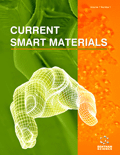Abstract
Background: New insights into materials science provide development of smart nano/micro structured materials for advanced applications. Rare earth includes a set of chemical elements (from La to Lu, including Sc and Y) with unique properties, the use of which is evidenced by luminescence applications. Colloidal processing offers great possibilities to obtain smart materials by controlling inter-particle forces, as well as their evolution during ceramic processing. The present article reports a review on colloidal processing with emphasis on rare earth powders. A general view about rare earths properties, including scientific investigations and applications are also presented.
Methods: General view on rare earth sources, classification, properties, studies, and applications are reported. Besides, a review on colloidal processing covering particle characteristics, inter- particle forces, dispersion methods, rheology of suspensions, shaping process, drying-sintering stage, and microstructure formation is reported.
Results: Yttria is the most used rare earth oxide in phosphors applications (70%). Synthesis routes imply on powder properties. Particle characteristics as size, shape, density, and surface area are important parameters for colloidal processing. The control of inter- particle forces by zeta potential evaluation and using dispersion methods provide conditions to prepare stable suspensions. Consolidation of colloidal particles into a desired shape depends on both viscosity and rheological behavior of suspensions. Drying-sintering conditions are effective on microstructure formation and component characteristics. Bio-prototyping is a low cost method, which provides components with complex shape and cellular architecture.
Conclusion: Rare earths exhibit remarkable properties, being applied in diverse technological end-use. Colloidal processing provides opportunities to form smart materials since synthesis of colloids until development of complex ceramic components by shaping methods and thermal treatment. Even though colloidal processing is quite mature, investigations on rare earths involving inter- particle forces, shaping, drying-sintering stage, and microstructure formation are very scarce.
Keywords: Colloidal processing, dispersion, particles, rare earths, rheology, shaping, sintering, smart materials.
Graphical Abstract
 31
31 6
6 1
1 1
1


